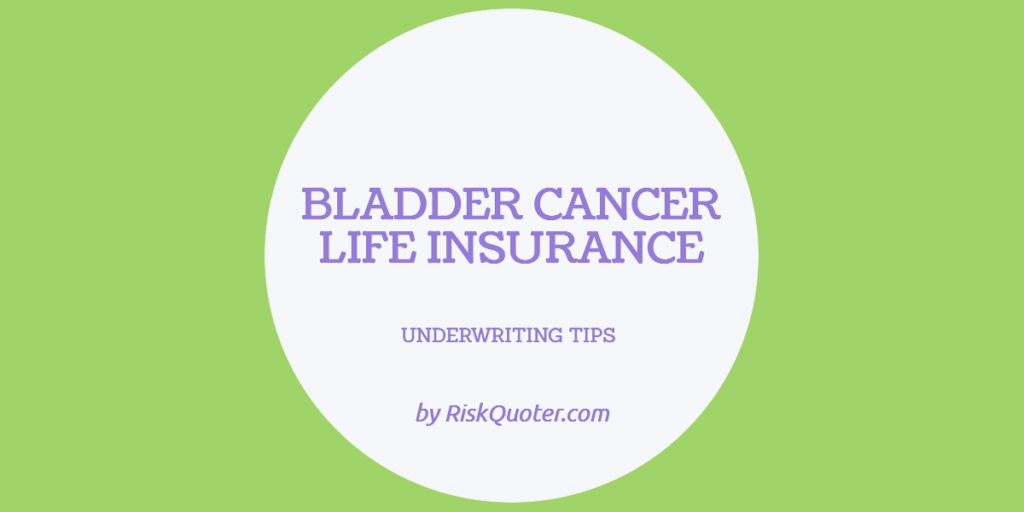We specialize in helping bladder cancer survivors secure affordable life insurance, even if you’ve previously been labeled “high-risk.” Understanding your challenges, we guide you step-by-step toward the coverage you need.
How Does Bladder Cancer Affect Life Insurance?
About 90% of bladder cancers in industrialized countries are Transitional Cell Carcinomas (TCC), starting in the bladder’s inner lining. Other types, such as adenocarcinoma, squamous cell carcinoma (not to be confused with squamous cell skin cancer), small cell carcinoma, and sarcoma, are less common but carry a higher risk and poorer prognosis.
Insurance companies carefully consider the likelihood of recurrence, as bladder cancer is known for recurring after initial treatment. Factors like tumor type, stage, grade, treatment history, and follow-up care significantly influence underwriting decisions.
Life Insurance by Cancer Stage
Here’s a detailed overview based on the stage of bladder cancer:
Stage Tis (Carcinoma In Situ)
Carcinoma in situ (CIS) is considered a high-risk, superficial form of bladder cancer because it may become invasive. Insurance companies typically postpone offering coverage until at least two years after treatment completion.
Once eligible, rates usually include:
- Premiums are about 50% higher (table rating) than standard.
- A “flat extra” fee of approximately $1,000 per $100,000 coverage, typically lasting up to 10 years
Stage Ta
Stage Ta tumors have not invaded deeper bladder tissues, and you may qualify for life insurance soon after follow-up if:
- You’ve had fewer than three tumors
- All tumors were smaller than 3cm
Under these conditions:
- Standard rates plus a temporary flat extra fee of $500–$750 per $100,000 coverage for 3–4 years
If you had more than three tumors or tumors larger than 3cm:
- Coverage will typically be postponed for one year after completion of treatment
- Standard rates with an added flat extra fee of $600–$750 per $100,000 coverage, lasting approximately five years
Other cancers that have similar ratings added include prostate cancer and breast cancer.
Stage 1
Stage 1 bladder cancer involves more variables, including:
- Number and size of tumors
- Tumor grade (low-grade or high-grade)
- Number of occurrences
- Treatment methods (such as BCG therapy)
For low-grade cases, underwriting typically involves:
- A one-year waiting period post-treatment
- Rates 50% above standard with a flat extra of $600–$750 per $100,000 coverage, lasting five years
High-grade tumors typically require:
- A two-year waiting period post-treatment
- Rates 50% above standard, plus a flat extra fee of approximately $1,000 per $100,000 coverage, lasting up to 10 years
Multiple treatment episodes or recurrences may significantly limit insurance availability.
Low-stage cervical cancer would follow similar guidelines.
Stage 2 (Invasive Bladder Cancer)
Stage 2 cancers usually require radical cystectomy (complete removal of the bladder) for life insurance eligibility. Even then:
- Coverage will be postponed for 3–5 years after surgery
- Standard rates plus approximately 50% table rating
- Possible flat extra fees of around $1,000 per $100,000 coverage, depending on individual medical history
Life insurers will most likely decline to offer life insurance to you unless you have completed a radical (total) cystectomy.
Stage 3 and Stage 4
Advanced stages limit the type of coverage options significantly:
- Guaranteed-issue life insurance typically offers limited coverage (around $25,000)
- Accidental death insurance may be another viable option
Treatment and Surveillance Importance
Routine surveillance through regular cystoscopy and urine cytology testing is essential due to the high recurrence rate of bladder cancer. For moderate and high-risk tumors, insurers typically require:
- Surveillance every 3 months for the first 2 years.
- Every 6 months for the next 3 years
- Annually thereafter
Insurance companies value adherence to recommended follow-up care. It’s very difficult to get coverage if follow-ups are inconsistent.
Improve Your Approval Chances
Here are some proactive steps to improve your likelihood of securing coverage:
- Maintain consistent follow-ups and retain comprehensive medical records
- Quit smoking, as insurers view tobacco use as a substantial risk factor
- Show insurers stability and adherence to recommended care plans
Bladder Cancer Underwriting Questions
When assessing your application, insurance companies typically ask:
- When were you diagnosed with bladder cancer?
- What stage was the bladder cancer?
- Were any lymph nodes positive for cancer?
- Was cancer a low-grade (well-differentiated) or high-grade (poorly differentiated) cancer?
- How was bladder cancer treated?
- Transurethral Resection (TURBT)
- Cystectomy – Partial or Radical
- Chemotherapy – Either intravesical (entered into the bladder) or systemic (injection or pill).
- If you had a TURBT, did you receive BCG or mitomycin after the TURBT?
- If yes, please include the start and completion dates.
- Has the bladder carcinoma recurred?
- How often do you visit your physician for follow-up testing?
- When were your last cystoscopy and urine cytology tests?
- What medications and dosages do you take?
- Are you a cigarette smoker?
- If you quit, when did you quit smoking?
- Have you had any other health issues in the past or present? If yes, please describe.
If you’ve had other cancers like colon cancer or thyroid cancer, let us know, as different underwriting rules apply.
Get Started Today
Life insurance rates can improve as your health remains stable over time. We will thoroughly review your medical records and work with life insurers specializing in coverage for bladder cancer survivors.
Take control of your future. Complete your quote request now, and let us help you secure peace of mind for you and your loved ones.
